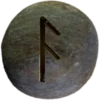Last Updated on December 1, 2024
Table of Contents


Aslaug (pronounced “AHS-lauhg”), also known as Kráka (pronounced “KROH-kah,” meaning “Crow”), stands out as a prominent figure in Viking history and legend. As the daughter of the dragon-slayer Sigurd (pronounced “SEE-gurd”) and the shield-maiden Brynhildr (pronounced “BRYN-hil-dur”), Aslaug’s lineage carried immense renown. Despite her noble birth, she grew up hidden in secrecy, adopted by a family of poor peasants.
Her story gains depth in the Saga of Ragnar Lothbrok, where she became Ragnar’s second wife. Aslaug’s beauty and wisdom set her apart, and legends claim she foretold the future. In one tale, she cleverly avoided Ragnar’s challenge to appear neither clothed nor unclothed, arriving draped in a fishing net. This act demonstrated her intellect and strength, winning Ragnar’s respect and love.
Aslaug bore several sons for Ragnar, each of whom became legendary warriors. These included Ivar the Boneless (pronounced “EE-var”), Bjorn Ironside (pronounced “BYORN”), and Sigurd Snake-in-the-Eye. Her influence on her sons’ lives and leadership highlights her importance not only as a mother but also as a strategic advisor.
Her wisdom and resilience appear throughout Viking lore. The Saga of Ragnar Lothbrok portrays her as more than a wife or mother—she stands as a powerful and clever figure who shaped the future of her family and people.
Elder Futhark Runes Associated with Aslaug
The Ansuz rune (pronounced “AHN-sooz”) symbolizes wisdom and communication, reflecting Aslaug’s intellect and foresight. The Berkanan rune (pronounced “BER-kah-nahn”) represents fertility and family, aligning with her role as a mother of legendary Viking leaders. ![]()
The Importance in Asatru
Aslaug inspires followers to embrace intelligence, strength, and foresight. Her role as a mother and leader embodies the balance between wisdom and action, qualities valued in modern practice.


